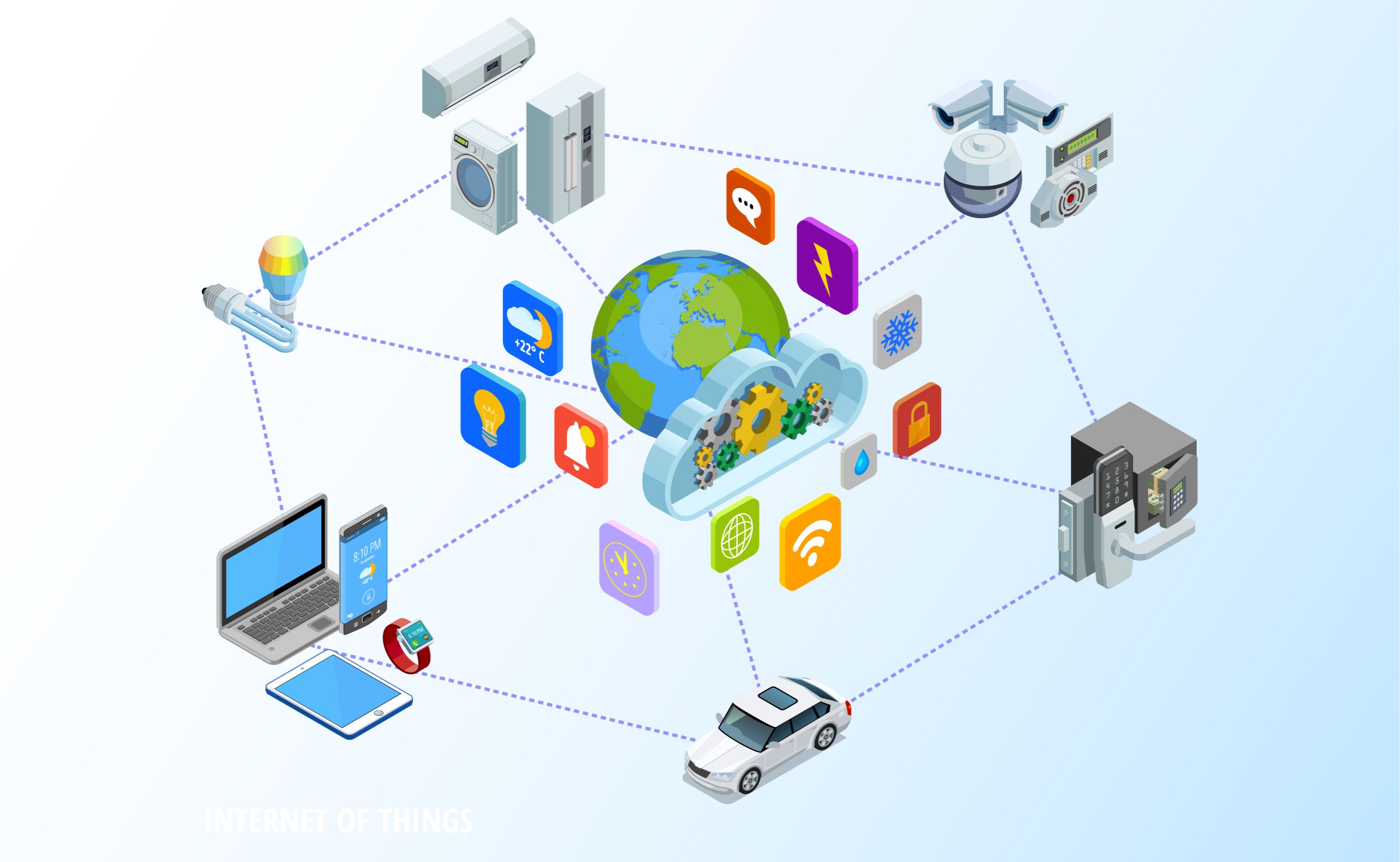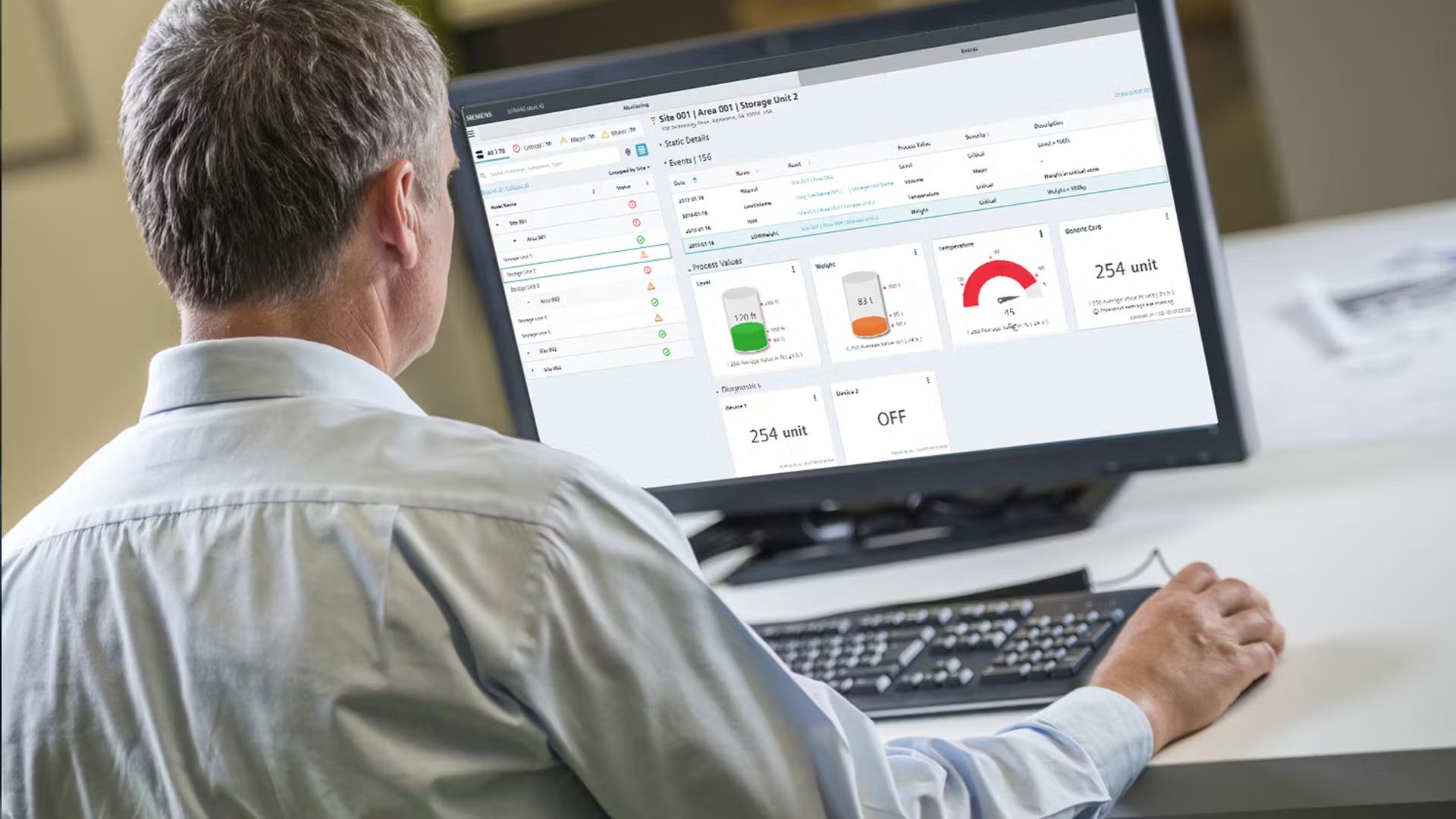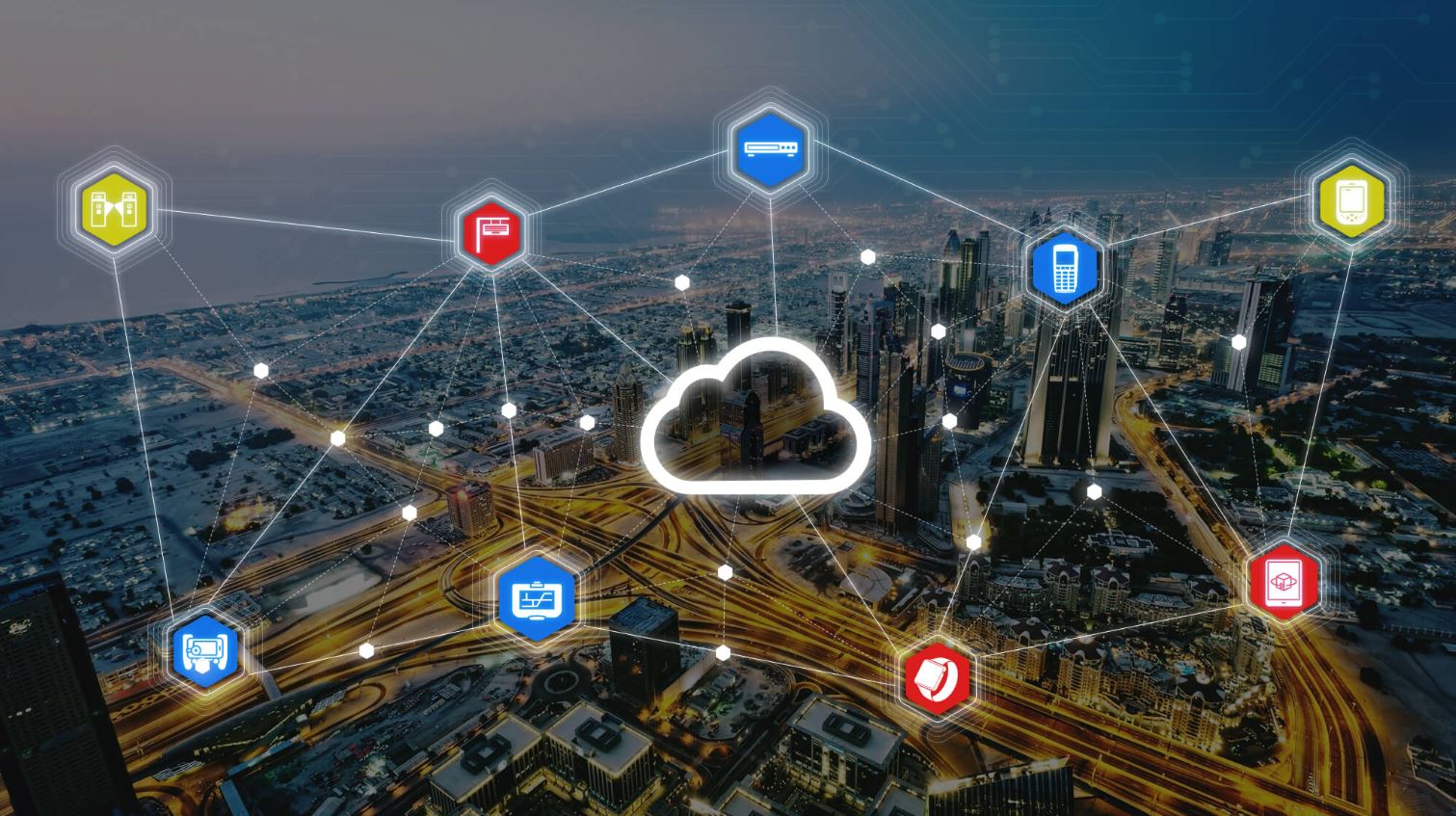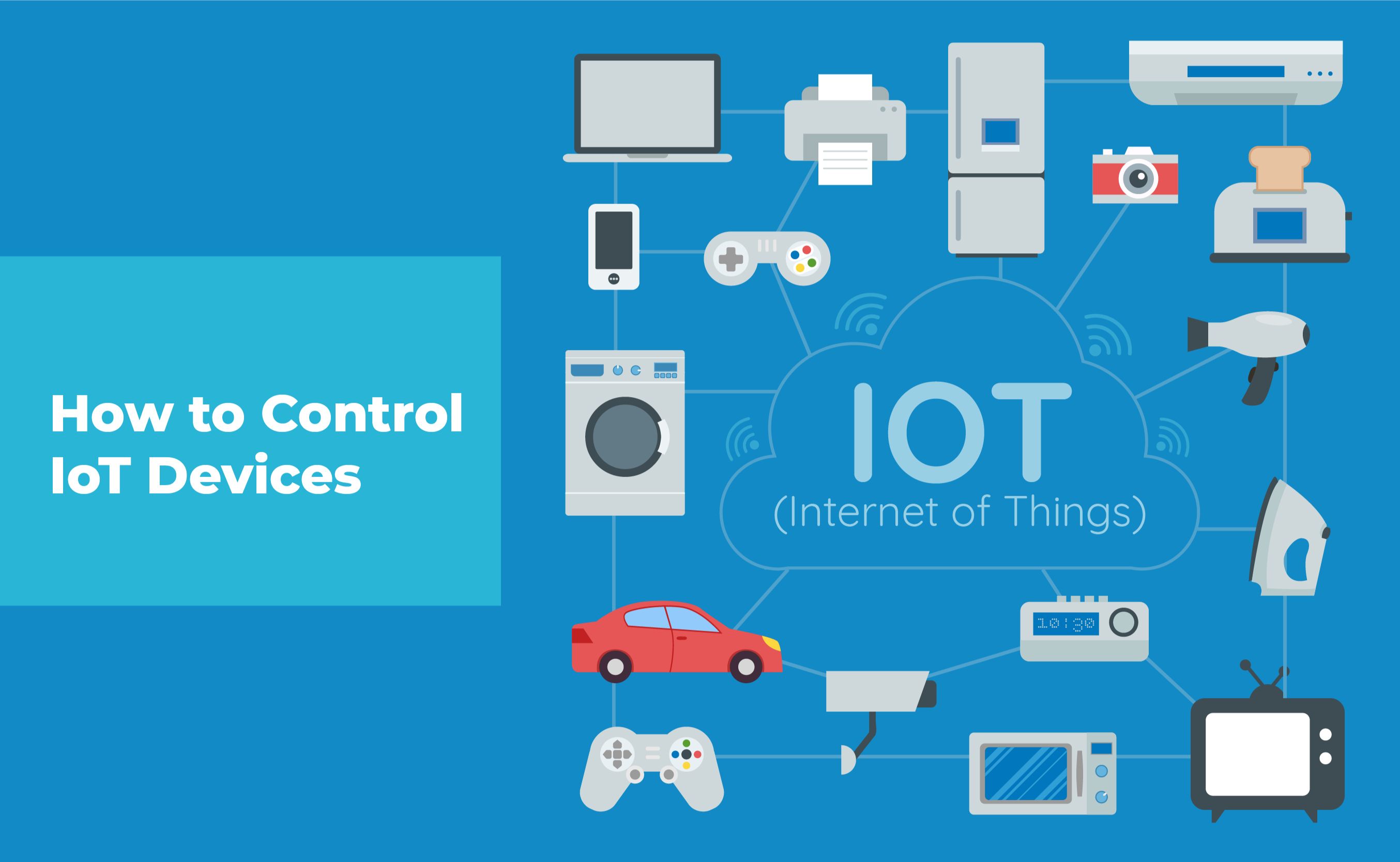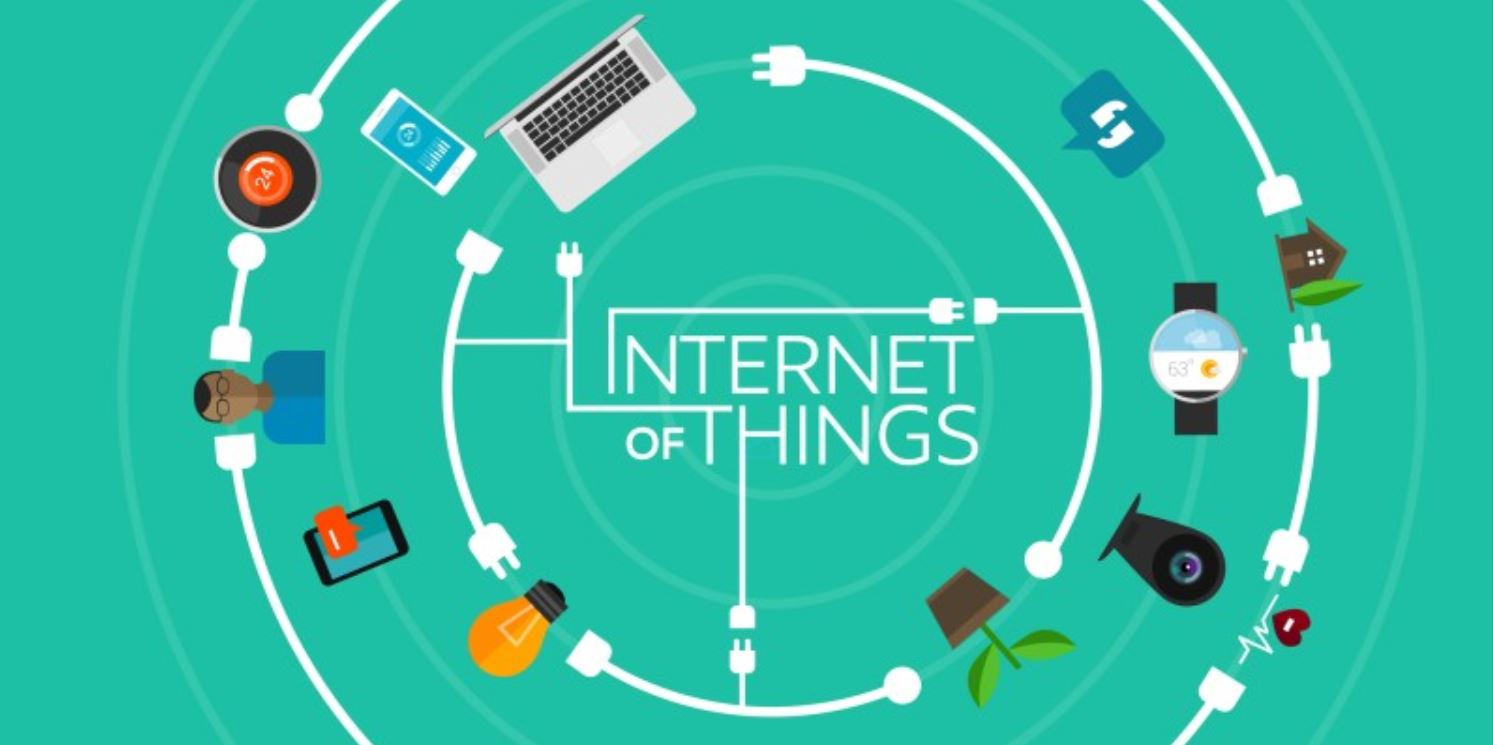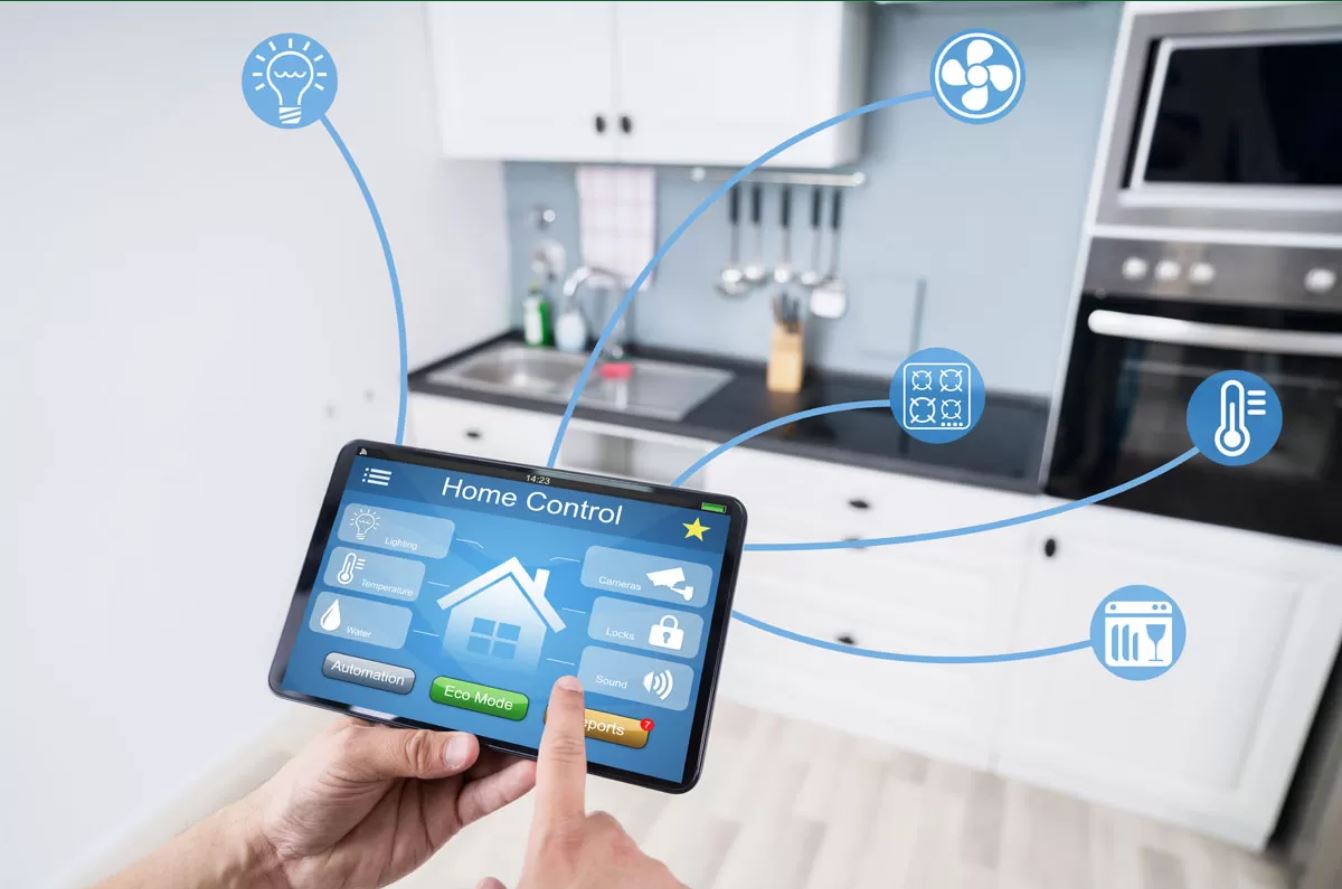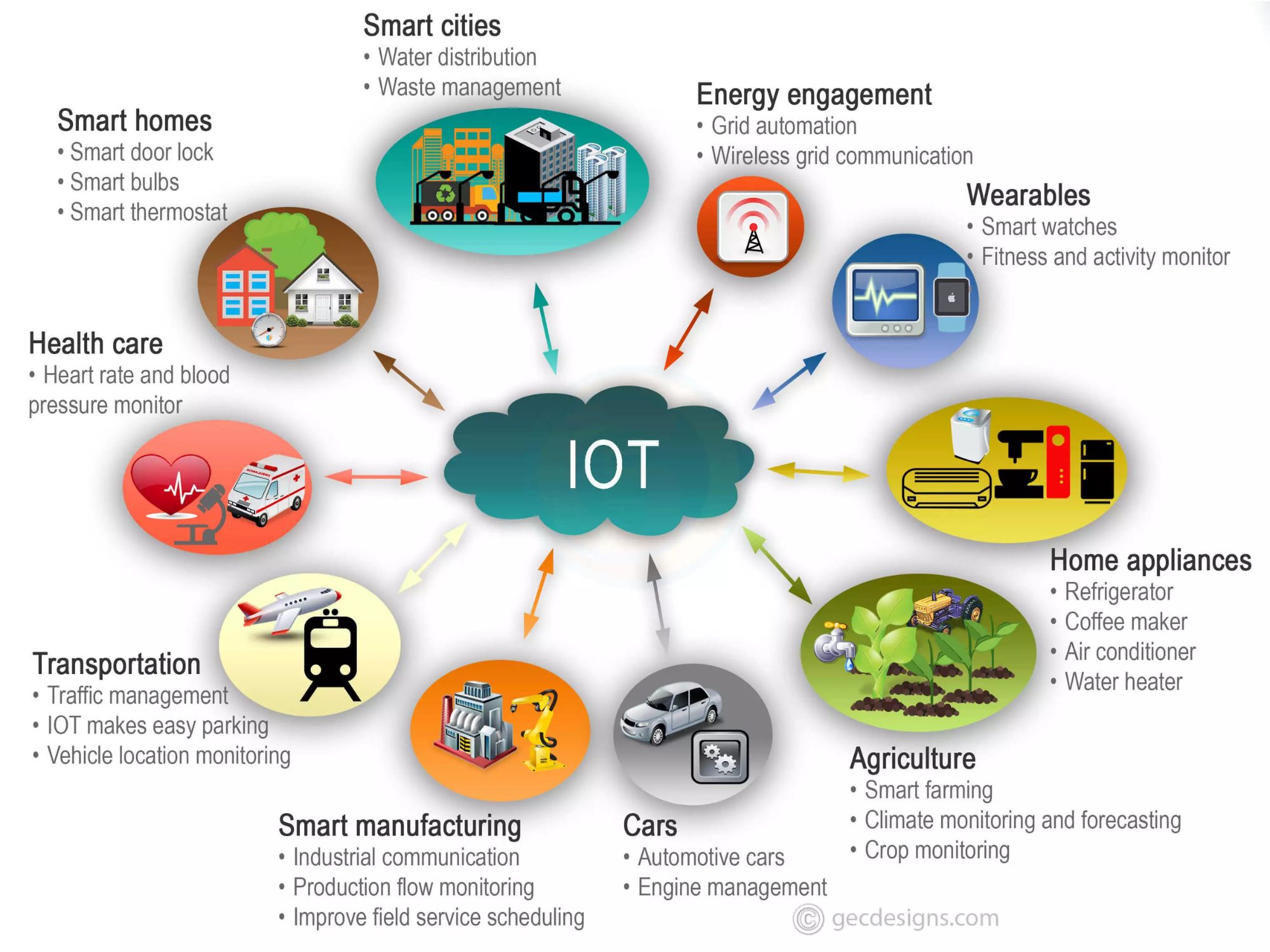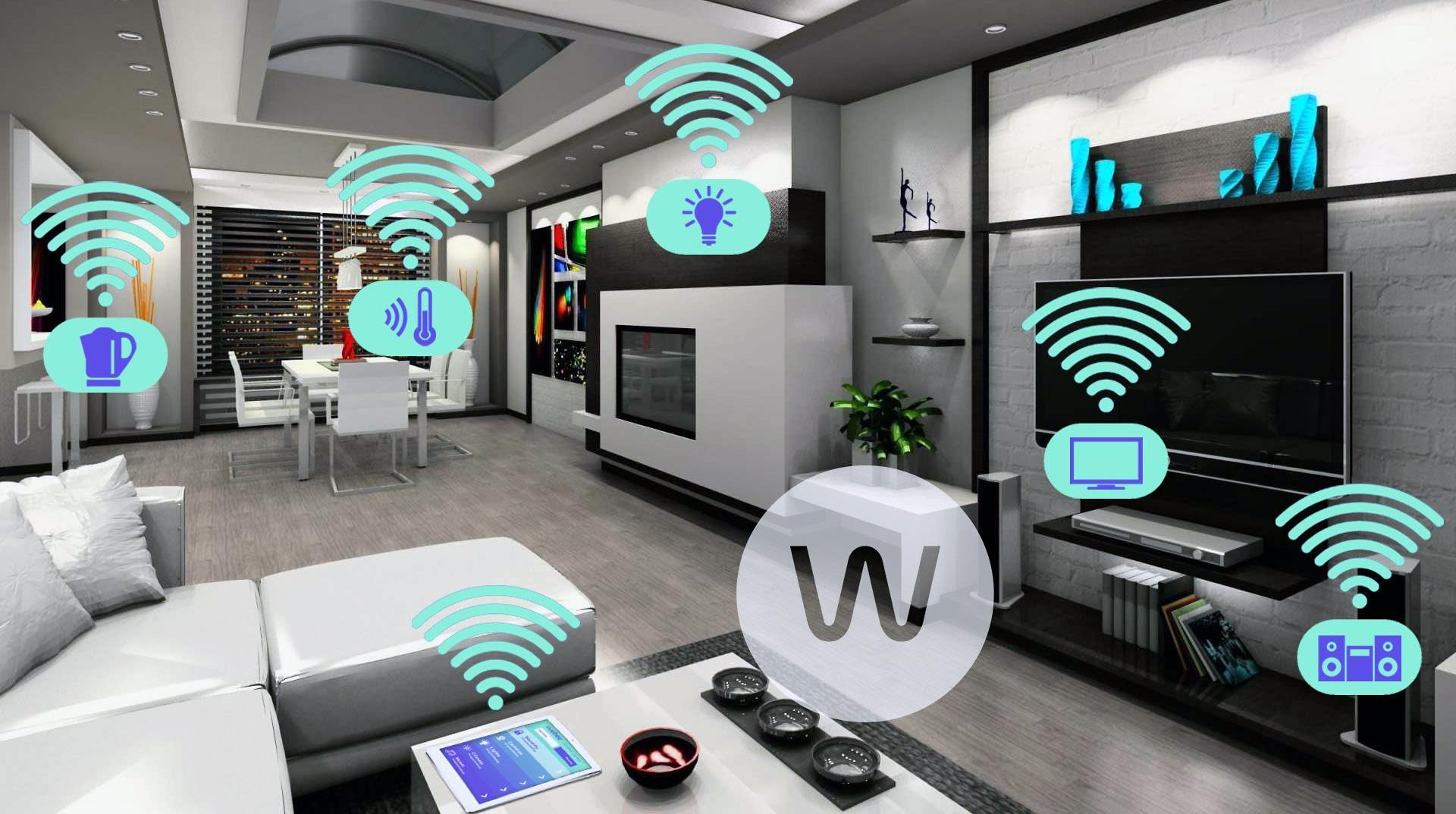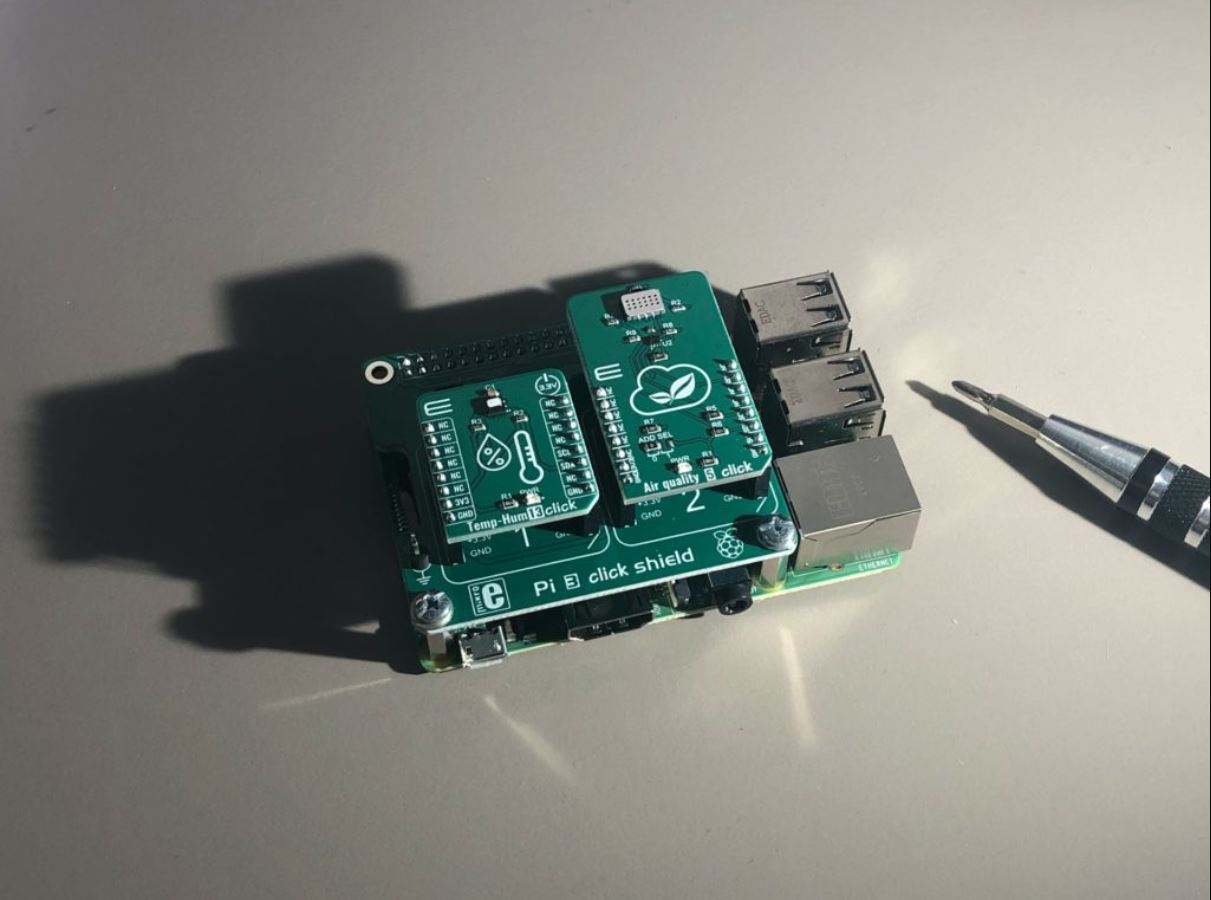Introduction
As technology continues to advance, so does our ability to connect and control various devices in our everyday lives. One such technology that has gained significant popularity is the Internet of Things (IoT). IoT devices are essentially everyday objects embedded with sensors, software, and internet connectivity, allowing them to collect and exchange data. These devices range from smart thermostats and home security systems to wearables and industrial machinery.
The convenience and functionality of IoT devices are further enhanced by the ability to access and control them remotely. Remote access enables users to interact with their devices from anywhere, be it adjusting the temperature in their homes while at work or monitoring the performance of industrial equipment from a different location. But how exactly can one access IoT devices remotely? In this article, we will explore the different methods and options available for remote access, as well as the considerations and steps involved in setting it up.
Before diving into the specifics, it’s important to understand the benefits that remote access brings to the table. By being able to control and monitor IoT devices from a distance, users can enjoy enhanced convenience, efficiency, and peace of mind. Imagine being able to turn on your home security system and receive alerts on your smartphone if any suspicious activity is detected, even when you’re away on vacation. Additionally, remote access allows for proactive maintenance and troubleshooting, as issues can be identified and addressed remotely, thereby minimizing downtime and costly repairs.
Now that we have explored the advantages of remote access for IoT devices, it’s time to delve into the various options available to achieve this functionality. Stay tuned as we explore different remote access methods, and provide step-by-step instructions on how to set it up for your IoT devices.
Understanding IoT Devices
In order to fully appreciate the concept of remote access for IoT devices, it is important to have a clear understanding of what IoT devices are and how they function. As mentioned earlier, IoT devices are everyday objects that have been equipped with sensors, software, and internet connectivity. These devices can sense, collect, and transmit data, enabling them to interact with their environment and other connected devices.
IoT devices can be found in various environments, including homes, offices, healthcare facilities, manufacturing plants, and even public spaces. They come in many forms, such as smart thermostats, lighting systems, security cameras, wearables, and even automobiles. The key feature that distinguishes IoT devices from conventional devices is their ability to connect to the internet and communicate with other devices in a network.
One of the fundamental elements of IoT devices is sensors. These sensors collect various types of data, such as temperature, humidity, light intensity, motion, and more. This data is then processed by the device’s software or transmitted to a central server for further analysis. The ability to gather and analyze this data allows IoT devices to provide valuable insights, automate tasks, and make intelligent decisions.
Another crucial aspect of IoT devices is their ability to communicate with each other. This is typically achieved through wireless protocols like Wi-Fi, Bluetooth, Zigbee, or cellular networks. The devices can exchange data, receive commands, and collaborate to perform complex tasks. For example, a home automation system may consist of multiple IoT devices, such as a smart thermostat, smart locks, and smart lights, all of which can communicate and work together to optimize energy efficiency and enhance security.
It is important to note that while IoT devices offer numerous benefits and conveniences, they also present potential challenges. The sheer number of connected devices and the massive amount of data they generate can lead to security vulnerabilities and privacy concerns. It is crucial for device manufacturers and users to take appropriate measures to protect the integrity and confidentiality of IoT systems and data.
Now that we have a better understanding of what IoT devices are and how they function, let’s explore the benefits and options for accessing these devices remotely.
Benefits of Remote Access
The ability to remotely access and control IoT devices offers several significant benefits to users. Let’s explore some of the key advantages:
- Convenience: Remote access allows users to conveniently control their IoT devices from anywhere. Whether you’re at work, on vacation, or simply in another room, you can easily adjust settings, monitor statuses, and receive real-time notifications. Imagine being able to turn on the lights and preheat the oven before you even step foot inside your home.
- Efficiency: Remote access enables users to optimize the performance and energy efficiency of their IoT devices. For example, you can remotely adjust the thermostat to conserve energy while you’re away, or schedule your smart appliances to operate during off-peak hours to reduce utility costs. This level of control and automation can lead to significant savings and a more environmentally friendly lifestyle.
- Peace of Mind: With remote access, you can enjoy peace of mind knowing that you can monitor and secure your home or office at all times. Receive alerts on your smartphone if a security camera detects suspicious activity, or remotely lock doors and arm your alarm system when you’re away. This added layer of security helps protect your property and loved ones.
- Remote Maintenance and Troubleshooting: Remote access enables proactive maintenance and troubleshooting of IoT devices. Manufacturers or service providers can remotely diagnose and address issues, reducing the need for on-site visits and minimizing downtime. This saves time, resources, and frustration for both users and service providers.
- Scalability: Remote access allows for easy scalability of IoT systems. As your needs change or you add more devices to your network, you can easily manage and control them remotely without the need for complex installations or additional physical infrastructure.
These are just a few of the many benefits that remote access brings to users of IoT devices. The convenience, efficiency, peace of mind, and scalability it provides make it a valuable feature for both personal and professional use.
Now that we understand the advantages of remote access, let’s explore the different options available for remotely accessing your IoT devices.
Remote Access Options
When it comes to remotely accessing IoT devices, there are several options available, each with its own advantages and limitations. Let’s take a look at some of the common remote access methods:
- Mobile Applications: Many IoT devices offer dedicated mobile applications that allow users to control and monitor their devices remotely. These applications are typically available for smartphones and tablets and provide an intuitive interface for managing device settings, receiving real-time notifications, and accessing device data. Mobile applications are convenient and user-friendly, making them a popular choice for remote access.
- Web-Based Interfaces: Some IoT devices provide web-based interfaces that can be accessed through a web browser on any device with an internet connection. These interfaces allow users to log in and access the device’s control panel, adjust settings, and monitor device status. Web-based interfaces offer flexibility and compatibility across different devices and operating systems.
- Virtual Private Network (VPN): A VPN creates a secure connection between your device and the IoT device, allowing you to access it as if you were on the same local network. Using a VPN ensures that your data is encrypted, protecting it from potential threats. This method is ideal for accessing IoT devices in a secure and private manner over the internet.
- Cloud-Based Platforms: Many IoT devices leverage cloud-based platforms for remote access and management. These platforms act as intermediaries, facilitating communication between the IoT device and the user’s device. Users can log in to the platform’s web portal or mobile application to access and control their devices from anywhere with an internet connection. Cloud-based platforms provide convenience and seamless integration across multiple devices and locations.
It’s important to note that the availability of these remote access options may vary depending on the specific IoT device and its manufacturer. Before purchasing an IoT device, it’s worth considering the remote access options it offers and ensuring they align with your needs and preferences.
Now that we understand the different remote access methods available, let’s move on to the steps involved in setting up remote access for your IoT devices.
Setting Up Remote Access for IoT Devices
Setting up remote access for your IoT devices may vary depending on the specific device and manufacturer. However, here are some general steps to help you get started:
- Check Device Compatibility: Before setting up remote access, ensure that your IoT devices support remote access functionality. Check the device’s documentation or consult the manufacturer’s website for information on remote access capabilities.
- Connect to a Network: Ensure that your IoT device is connected to a stable and reliable network with internet connectivity. This can be a Wi-Fi network or an Ethernet connection.
- Enable Remote Access: Access the device’s settings or configuration interface, and look for an option to enable remote access. This feature may be labeled as “Remote Control,” “Remote Management,” or “Remote Access.” Follow the instructions provided by the manufacturer to enable this functionality.
- Create an Account: In some cases, you may need to create an account with the device’s manufacturer or associated cloud platform. This account will be used to log in and remotely access your devices. Follow the registration process and provide any necessary information to create your account.
- Configure Security Settings: It is crucial to ensure that your remote access is secured. Set strong and unique passwords for your accounts and devices. Consider enabling additional security measures such as two-factor authentication or device-specific access codes.
- Test Remote Access: Once you have enabled remote access and configured the necessary settings, test the functionality by accessing your IoT device from a remote location. Use the designated mobile application, web interface, VPN, or cloud platform to log in and test the ability to control and monitor your device.
- Update Firmware and Software: Regularly check for firmware or software updates for your IoT devices. Keeping them up to date ensures that you have the latest security patches and improvements, minimizing the risk of vulnerabilities.
Remember that the specific steps for setting up remote access may vary depending on your device, so always refer to the manufacturer’s documentation for accurate and detailed instructions.
In the next section, we will explore important security considerations when it comes to remote access for IoT devices.
Security Considerations for Remote Access
While remote access brings convenience and functionality to IoT devices, it is crucial to prioritize security to protect your devices and data. Here are some important security considerations to keep in mind:
- Strong Passwords: Use strong, unique passwords for all accounts associated with your IoT devices. Avoid using common passwords or easily guessable combinations. Consider using a password manager to generate and manage complex passwords.
- Two-Factor Authentication: Enable two-factor authentication whenever possible. This adds an extra layer of security by requiring a second form of verification, such as a fingerprint scan or a unique code sent to your mobile device, in addition to the password.
- Keep Firmware and Software Updated: Regularly update the firmware and software of your IoT devices. Manufacturers often release updates to address security vulnerabilities and improve device performance. Keeping your devices up to date ensures that you have the latest protections in place.
- Secure Network Connection: Ensure that your home or office network is secure. Use a strong and unique Wi-Fi password, and consider using encryption protocols to protect your network traffic. Avoid connecting to public or unsecured Wi-Fi networks when accessing your IoT devices remotely.
- Disable Unused Features: Review the settings of your IoT devices and disable any features or services that are not actively needed. Each enabled feature increases the potential attack surface and may introduce vulnerabilities.
- Monitor Device Activity: Regularly monitor the activity logs and notifications of your IoT devices. Be alert for any suspicious or unexpected behavior, such as unauthorized access attempts or unusual data transfers. Report any suspicious activity to the device manufacturer or service provider.
- Secure Your Mobile Devices: If you access your IoT devices through a mobile application, ensure that your smartphone or tablet is secure. Use strong passcodes or biometric authentication, keep your operating system and applications up to date, and be cautious of downloading apps from untrusted sources.
- Regularly Review Privacy Settings: Review the privacy settings of your IoT devices and associated accounts. Understand what types of data are collected, how they are used, and who has access to them. Adjust the settings to align with your privacy preferences.
Implementing these security measures can significantly reduce the risk of unauthorized access or compromise of your IoT devices and personal data. Remember, security is an ongoing process, so make it a habit to regularly review and update your security practices.
In the next section, we will address common troubleshooting tips for remote access to ensure smooth and uninterrupted operation of your IoT devices.
Troubleshooting Remote Access
While setting up remote access for your IoT devices may seem straightforward, it’s not uncommon to encounter issues along the way. Here are some common troubleshooting tips to help resolve any problems you may encounter:
- Check Network Connectivity: Ensure that your IoT device is connected to a stable and reliable network with internet connectivity. Verify that your Wi-Fi or Ethernet connection is working correctly.
- Restart Devices: Sometimes, a simple restart can resolve connectivity issues. Try restarting both your IoT device and your router to refresh the network connection.
- Verify Remote Access Settings: Double-check that you have enabled remote access correctly on your IoT device. Make sure you have followed the manufacturer’s instructions accurately.
- Test Different Remote Access Methods: If you are experiencing issues with one remote access method, try using an alternative method. For example, if a mobile application is not working, try accessing your device through a web-based interface or vice versa.
- Check Firewall and Port Forwarding Settings: Ensure that your router’s firewall settings and port forwarding configurations are correctly set. Some devices may require specific ports to be opened for remote access.
- Update Device Firmware: Check if there are any firmware updates available for your IoT device. Updating the firmware can help resolve compatibility issues and improve overall device performance.
- Reset Device to Factory Settings: As a last resort, you can try resetting your IoT device to its factory settings. This should be done with caution, as it will erase all personalized settings and configurations. Consult the device’s documentation for instructions on how to perform a factory reset.
- Contact Manufacturer or Support: If you’ve exhausted all troubleshooting steps and are still experiencing issues with remote access, reach out to the device manufacturer or their support team for further assistance. They may be able to provide additional guidance or firmware updates specific to your device.
Remember to document any troubleshooting steps you’ve taken and any error messages encountered. This information will be helpful when seeking support from the device manufacturer or support team.
By following these troubleshooting tips, you can overcome common obstacles and ensure a smooth and uninterrupted remote access experience for your IoT devices.
Now that we’ve explored troubleshooting, let’s summarize the key points discussed in this article.
Conclusion
Remote access for IoT devices has revolutionized the way we interact with and manage our devices. The ability to control and monitor IoT devices from anywhere offers convenience, efficiency, and peace of mind. By leveraging remote access options such as mobile applications, web-based interfaces, VPNs, and cloud-based platforms, users can seamlessly integrate their IoT devices into their daily lives.
When setting up remote access, it is essential to prioritize security. Implementing measures such as strong passwords, two-factor authentication, regular firmware updates, and secure network connections helps protect against unauthorized access and data breaches. Additionally, troubleshooting tips enable users to address connectivity issues and ensure a smooth remote access experience.
As the IoT landscape continues to evolve, we can expect further advancements in remote access technology. Manufacturers are continually improving their devices’ remote capabilities while simultaneously addressing security concerns. Additionally, advancements in network infrastructure and connectivity will further enhance the reliability and accessibility of remote access for IoT devices.
To fully leverage the benefits of remote access for your IoT devices, it is important to stay informed about new features and security practices. Keep an eye out for firmware updates, manufacturer announcements, and security guidelines to ensure the optimal performance and protection of your IoT devices.
In conclusion, remote access for IoT devices opens up a world of possibilities, allowing users to take control of their devices from anywhere. By understanding the fundamentals, exploring the available options, and implementing security measures, users can enjoy the convenience, functionality, and peace of mind that remote access brings to their IoT devices.







